Translation by Diana Bender-Bier:
Stills:
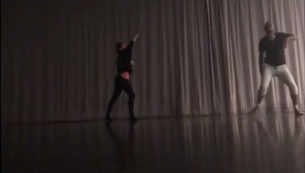
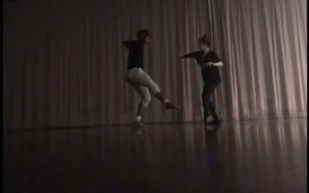
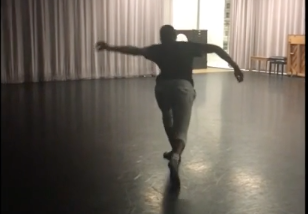
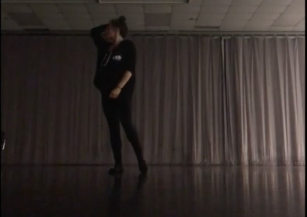
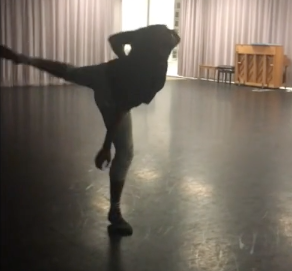
Original Text: "Good-Night" by Percy Bysshe Shelley Good-night? ah! no; the hour is ill Which severs those it should unite; Let us remain together still, Then it will be good night. How can I call the lone night good, Though thy sweet wishes wing its flight? Be it not said, thought, understood -- Then it will be -- good night. To hearts which near each other move From evening close to morning light, The night is good; because, my love, They never say good-night.
Translation Rationale:
My creation process went something like this:
First, I picked out key words or phrases from the poem I chose to work with: “Good-Night” by poet Percy Shelley. The phrases that I felted held thematic relevance to my project were: “the hour is ill,” “severs,” “lone night,” “Be it not said, thought, understood,” “hearts which near each other move,” “my love,” “never say goodnight”
Then, I used my visual translation to help guide me with a certain vibe:
I picked an image with Low Key lighting, because it creates strong contrasts between the brightest and darkest parts of the image and often creates obscuring shadows on main foci of the scene; The shadows and darker lighting leave a little ambiguity in the scene and in the characters. This style of lighting is often associated with suspenseful works, and I think this poem has intense suspense in its indecisive, inconclusive romantic nature. I used red or blue colors, because red gives off a romantic vibe and blue gives off a sense of solemness in the thought of departing from one’s partner — Here I used color to establish emotion. The picture of the couple capture the longing connection one partner shares for another at the late hours of the night. The colors depict how plainly and distinctly these emotions shine through in the poem.
And finally, I picked out parts and translation from my Bok-inspired translation:
Night, which has not be greeted so fondly.
Night, which has divided that which it should unite.
Might we stay with one another still? Then, the night might be so bright and wondrous, so welcoming she brings us in; sometimes with a welcoming breeze: wshhhh wwshhh into her warm wide arms, she stretches and pulls our bodies close.
Lonely, I feel, and wonder: how can I say that night is good?
Wishful, I am, that I will dream of sweetness, sweet luscious strawberries and sweet innocent rosy cheeks of a newborn baby.
Only, the only way to invite, to include a good night is to stop speaking, thinking, or understanding it. To stop questioning its being, the who, what, where, how, why, and to just experience the night.
Again, only then will it be a good night.
Hearts, to hearts of lovers who seek one another, lie next to each other from night to dayover.
Lights, they flicker from orange-soaked sunset, slowly bringing the day to a close. They blink on some hours after the darkness had invaded and visited the inhabitants of the world, and soon the sun peaks through, slowly, slyly, warmly, but always surprisingly.
Night, the night is good.
Why? Because, my love,
“Goodnight,” which when spoken by a lover, whispers a gentle farewell to the lover’s presence with the other in the daylight hours, is never spoken by these lovers.
“Goodnight,” bad, but “night,” quite “good,” because “they never say good-night.”
I proceeded to read the most image-provoking phrases from this translation I produced to appeal more to the dancer’s task of transposition: “welcoming she brings us in; sometimes with a welcoming breeze: wshhhh wwshhh into her warm wide arms, she stretches and pulls our bodies close. Lonely, I feel, and wonder: how can I say that night is good?” Next, I recited: “Wishful, I am, that I will dream of sweetness, sweet luscious strawberries and sweet innocent rosy cheeks of a newborn baby.” And lastly, I read: “Lights, they flicker from orange-soaked sunset, slowly bringing the day to a close. They blink on some hours after the darkness had invaded and visited the inhabitants of the world, and soon the sun peaks through, slowly, slyly, warmly, but always surprisingly.” I found Bok used a lot of different techniques, he told stories, he told history, he defined, he addressed, he repeated, and he clarified. He used a direct addressing, which I attempted to do as well. He began with one word and proceeded to define it. He crafted his prose so that every few sets of lines, he’d begin with either the same words or words with the same number of syllables. His immediate clarification and definitions inserted with such ease, allowed for clarity while preserving flow and fluidity in the work. The descriptions and broken up sentences with inserted clauses allow for multiple ideas to flow and for “stream of consciousness” to ensue and carry the ideas and words and images seamlessly from one idea to the next. It is a brilliant way to approach writing, because it tells a story, but is also clear and therefore functional and more accessible. It is also such a pleasure to read—so smooth, melodic, rhythmic.
This is an intralingual translation, preserving the meaning between the words but rewording and interpreting verbal signs by means of other signs of the same language. This video project is my attempt to translate intersemiotically through dance. Otherwise, my intentions were to capture the greater intention behind the work: to show the conflict in saying goodbye/goodnight through imagery, to convey the inner dialogue, and intense reasoning that is taking place. I decided that a visual translation of my process and my final product would be the best way to convey my process of translation. I chose to maintain main themes of separation and how it acts in the context of a loving relationship, whether it be a friendship or a romance.
I feel that this compilation of music, narration, partnering, and a capturing of intimate moments of separation and reunion was the most effective way to translate the poem the way I read it. A disadvantage is that in a way the visual eliminates the individual’s imagination’s translation of the poem. But, it also adds another dimension and another translation that others can utilize to better understand the poem. If it can function as that, or, even as just a presentation of separation from loved ones, then I would say my translation is successful.
This process added new dimensions to how I think about translation. So much is involved, but there are so many options and so many decisions to be made: what to keep, what to leave out, what I care about, and what I want the readers to care about. Overall, it taught me the power that comes in translating, and how scary that can be. It is also exciting to share my personal experience of this poem. I am sharing an intimate experience with the world, revealing my process and my mind to others.